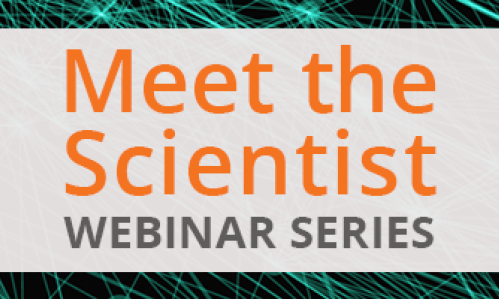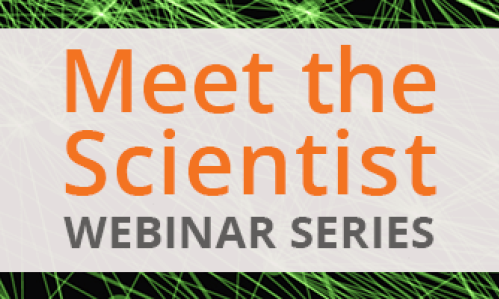Frequently Asked Questions about Schizophrenia
Frequently Asked Questions about Schizophrenia
Schizophrenia is a severe and debilitating brain and behavior disorder affecting how one thinks, feels and acts. People with schizophrenia can have trouble distinguishing reality from fantasy, expressing and managing normal emotions and making decisions. Thought processes may also be disorganized and the motivation to engage in life’s activities may be blunted. Those with the condition may hear imaginary voices and believe others are reading their minds, controlling their thoughts or plotting to harm them.
Most people with schizophrenia suffer from symptoms either continuously or intermittently throughout life and are often severely stigmatized by people who do not understand the disease. Contrary to popular perception, people with schizophrenia do not have “split” or multiple personalities and most pose no danger to others. However, the symptoms are terrifying to those afflicted and can make them unresponsive, agitated or withdrawn. People with schizophrenia attempt suicide more often than people in the general population, and estimates are that up to 10 percent of people with schizophrenia will complete a suicide in the first 10 years of the illness — particularly young men with schizophrenia.
While schizophrenia is a chronic disorder, it can be treated with medication, psychological and social treatments, substantially improving the lives of people with the condition.
A moving presentation by Dr. Kafui Dzirasa on Schizophrenia
There are several factors that contribute to the risk of developing schizophrenia.
- Genetics
- Environment
- Brain chemistry
- Brain structure
- Brain development
Scientists believe that many different genes may increase the risk of schizophrenia development, but that no single gene causes the disorder by itself. It is not yet possible to use genetic information to predict who will develop schizophrenia. Scientists also think that interactions between genes and aspects of the individual’s environment are necessary for schizophrenia to develop.
* Source: National Institute of Mental Health
View Webinar on Identifying Risk Factors and Protective Pathways for Schizophrenia
- Paranoid schizophrenia — feelings of extreme suspicion, persecution or grandiosity, or a combination of these.
- Disorganized schizophrenia — incoherent thoughts, but not necessarily delusional.
- Catatonic schizophrenia — withdrawal, negative affect and isolation, and marked psychomotor disturbances.
- Residual schizophrenia — delusions or hallucinations may go away, but motivation or interest in life is gone.
- Schizoaffective disorder — symptoms of both schizophrenia and a major mood disorder, such as depression.
Schizophrenia can have very different symptoms in different people. The way the disease manifests itself and progresses in a person depends on the time of onset, severity, and duration of symptoms, which are categorized as positive, negative and cognitive. All three kinds of symptoms reflect problems in brain function. Relapse and remission cycles often occur; a person can get better, worse and better again repeatedly over time.
- Positive symptoms, which can be severe or mild, include delusions, hallucinations, and thought disorders. Some psychiatrists also include psychomotor problems that affect movement in this category. Delusions, hallucinations and inner voices are collectively called psychosis, which also can be a hallmark of other serious mental illnesses such as bipolar disorder. Delusions lead people to believe others are monitoring or threatening them, or reading their thoughts. Hallucinations cause a patient to hear, see, feel or smell something that is not there. Thought disorders may involve difficulty putting cohesive thoughts together or making sense of speech. Psychomotor problems may appear as clumsiness, unusual mannerisms or repetitive actions, and in extreme cases, motionless rigidity held for extended periods of time.
- Negative symptoms reflect a loss of functioning in areas such as emotion or motivation. Negative symptoms include loss or reduction in the ability to initiate plans, speak, express emotion or find pleasure in life. They include emotional flatness or lack of expression, diminished ability to begin and sustain a planned activity, social withdrawal and apathy. These symptoms can be mistaken for laziness or depression.
- Cognitive symptoms involve problems with attention and memory, especially in planning and organizing to achieve a goal. Cognitive deficits are the most disabling for patients trying to lead a normal life.
Schizophrenia affects men and women equally. It occurs at similar rates in all ethnic groups around the world. Symptoms such as hallucinations and delusions usually start between ages 16 and 30.
Men tend to experience symptoms earlier than women. Most of the time, people do not get schizophrenia after age 45. Schizophrenia rarely occurs in children, but awareness of childhood-onset schizophrenia is increasing.
It can be difficult to diagnose schizophrenia in teens. This is because the first signs can include a change of friends, a drop in grades, sleep problems and irritability — behaviors that are common among teens.
Learn more about childhood-onset schizophrenia from this expert researcher:
 For more information about youth and schizophrenia, check out episodes from season four of Healthy Minds With Dr. Jeffrey Borenstein which are available to view on our website.
For more information about youth and schizophrenia, check out episodes from season four of Healthy Minds With Dr. Jeffrey Borenstein which are available to view on our website.
A combination of factors can predict schizophrenia in up to 80 percent of youth who are at high risk of developing the illness. These factors include isolating oneself and withdrawing from others, an increase in unusual thoughts and suspicions, and a family history of psychosis. In young people who develop the disease, this stage of the disorder is called the “prodromal” period.
Currently, schizophrenia is diagnosed by the presence of symptoms or their precursors for a period of six months. Two or more symptoms, such as hallucinations, delusions, disorganized speech, and grossly disorganized or catatonic behavior, must be significant and last for at least one month. Only one symptom is required for diagnosis if delusions are bizarre enough or if hallucinations consist either of a voice constantly commenting on the person’s behavior/thoughts, or two or more voices “conversing.” Social or occupational problems can also be part of the diagnosis during the six-month period.
Foundation-funded research to find markers, such as abnormal brain scans or blood chemicals that can help detect early disease and allow for quicker interventions is now being done. Scientists are also working to understand the genetic and environmental mechanisms that combine to cause schizophrenia. As more is discovered about chemical circuitry and structure of the brains of people with the disease, better diagnostic tools and early intervention techniques can be developed. This is crucial for schizophrenia as it is believed that with every psychotic episode, increased damage is done to the brain.
While no cure exists for schizophrenia, it is treatable and manageable with medication and behavioral therapy, especially if diagnosed early and treated continuously. Those with acute symptoms, such as severe delusions or hallucinations, suicidal thoughts or the inability to care for oneself, may require hospitalization. Antipsychotic drugs are the primary medications to reduce the symptoms of schizophrenia. They relieve the positive symptoms through their impact on the brain’s neurotransmitter systems. Cognitive and behavioral therapy can then help “retrain” the brain once symptoms are reduced.
These approaches improve communication, motivation, and self-care and teach coping mechanisms so that individuals with schizophrenia may attend school, go to work and socialize. Patients undergoing regular psychosocial treatment comply better with medication, and have fewer relapses and hospitalizations. A positive relationship with a therapist or a case manager gives a patient a reliable source of information about schizophrenia, as well as empathy, encouragement, and hope. Social networks and family member support have also been shown to be helpful.
 For more information about potential breakthroughs, treatments, and prevention strategies for schizophrenia, check out episodes from season four of Healthy Minds With Dr. Jeffrey Borenstein which are available to view on our website.
For more information about potential breakthroughs, treatments, and prevention strategies for schizophrenia, check out episodes from season four of Healthy Minds With Dr. Jeffrey Borenstein which are available to view on our website.
A method called transcranial direct current stimulation (tDCS) has already been used to help stroke victims recover, and has been studied in patients with Alzheimer's and Parkinson's diseases. tDCS is a non-invasive technique in which a very weak direct electrical current is passed through the cerebral cortex via electrodes placed on the scalp. Donel M. Martin, Ph.D., of the University of New South Wales, who used a 2010 NARSAD Young Investigator Grant to conduct studies with tDCS, says the method "can potentially help the brain activity and inhibiting competing brain regions." More studies are needed to determine if cognition related to psychiatric illness can be improved beyond the treatment sessions themselves.
Find answers to more questions about Schizophrenia in our Ask the Expert section.
View our Meet the Scientist Webinar on Schizophrenia: Could We Someday Prevent Schizophrenia Like We Prevent Cleft Palate?
Donate Now
Donations are welcome








